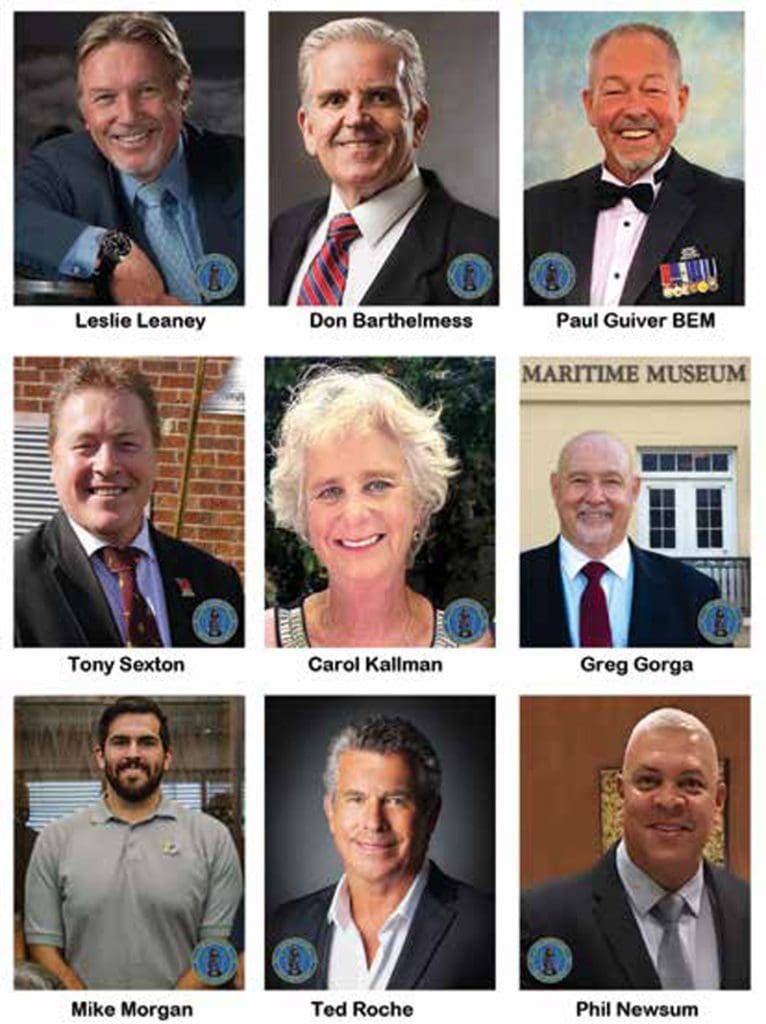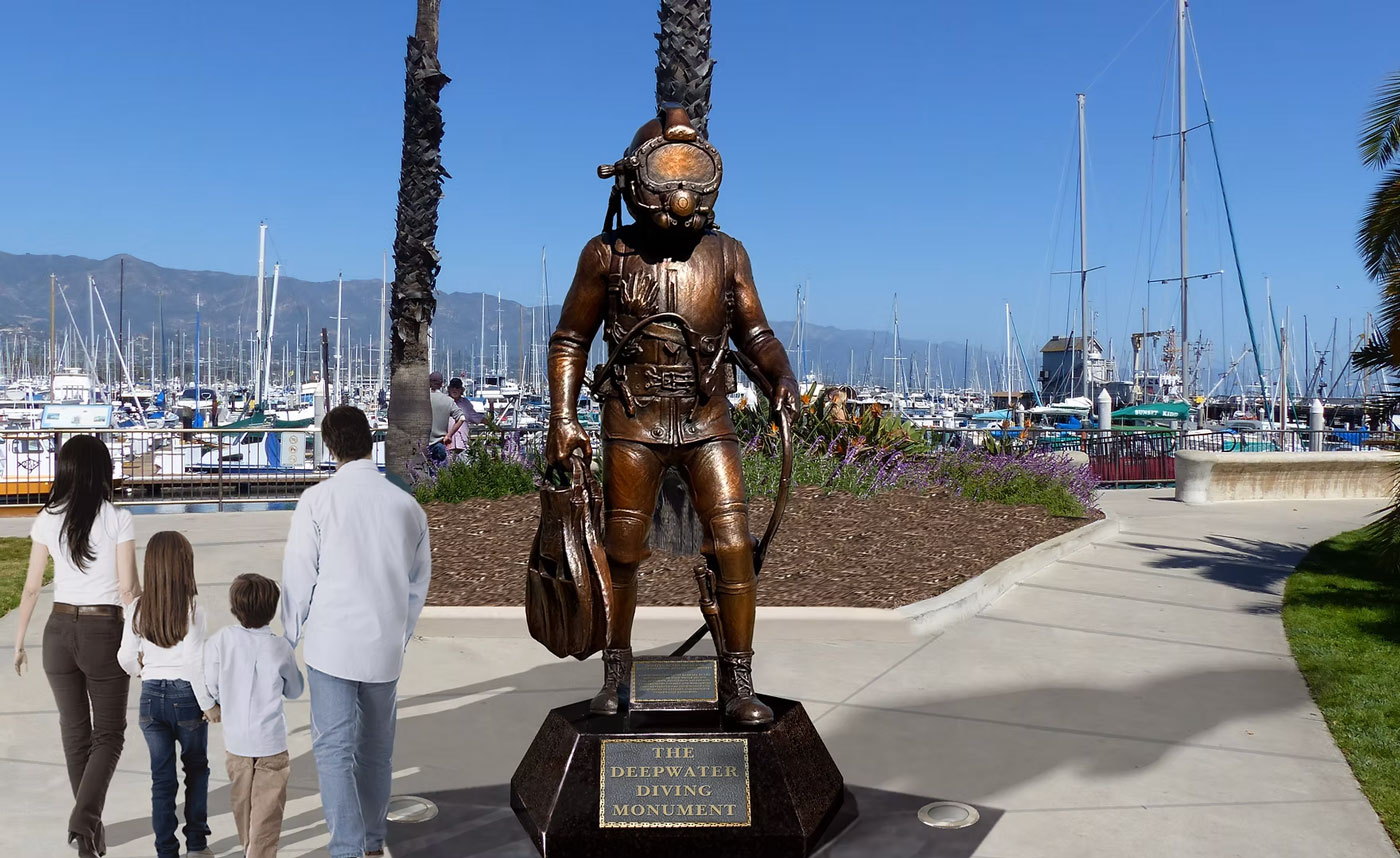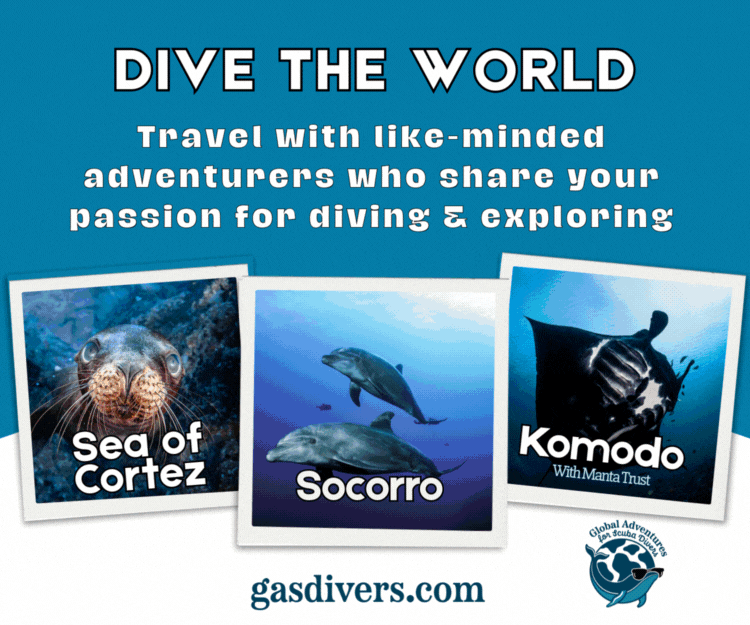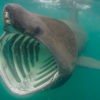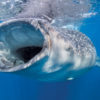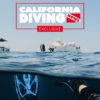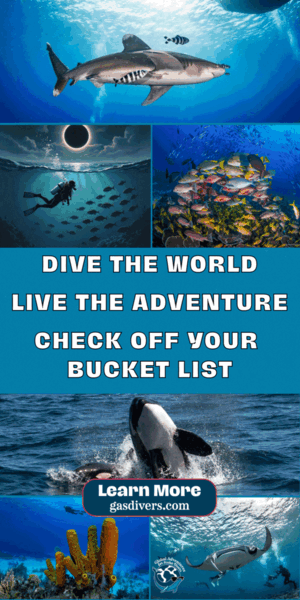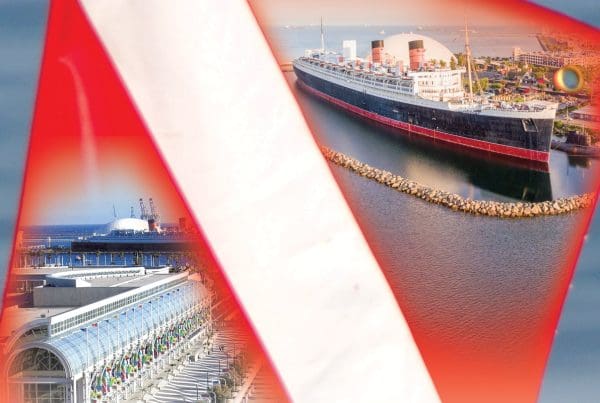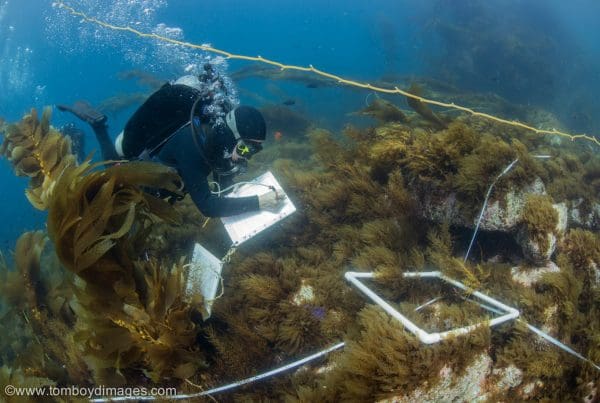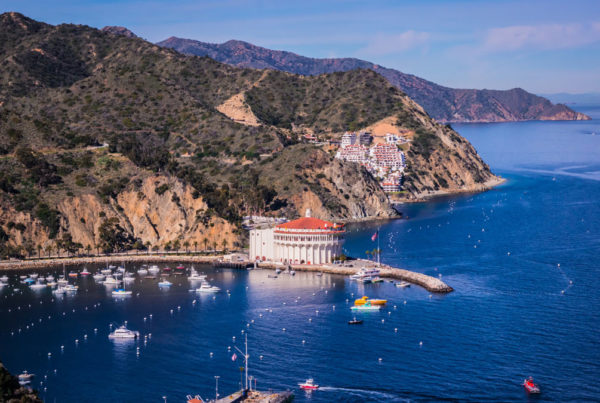An Interview with Leslie Leaney, Project Co-chairman
Very few people know it, but Santa Barbara is recognized as the birthplace of deepwater commercial diving technologies. That’s set to change on April 5, 2025, with the unveiling of the Deepwater Diving Monument at a prominent location adjacent to the Santa Barbara Harbor. For several decades the vast majority of deepwater diving helmets used by commercial divers worldwide have been made in Santa Barbara.
The following interview with Leslie Leaney, project co-chairman, explains how the Deepwater Diving Monument project has gone from idea to reality. In addition to being this project’s co-chair, Leaney is co-founder of the Historical Diving Society USA, Founding Trustee of Santa Barbara Maritime Museum, Founder and Publisher of The Journal of Diving History, and recipient of 2023 California Scuba Service Award.
CDN: The Deepwater Diving Monument in Santa Barbara is a unique project for the California diving community. Exactly what is it and why?
Leaney: Well, the “what” is that the Deepwater Diving Monument is a 10-foot-tall monument that recognizes Santa Barbara as the historical birthplace of deepwater commercial mixed gas diving. It comprises of an eight-foot-tall bronze diver, mounted on a two-foot-high granite-clad base, and depicts a commercial diver wearing a Kirby Morgan Superlite 17b diving helmet. The Monument is located on the walkway entrance to Santa Barbara harbor and is a tribute to the local divers who during the 1960s developed international deep water mixed gas diving.
The “why” is the historical fact that, casting off from Santa Barbara harbor in November 1962, Hugh “Dan” Wilson used his Japanese abalone diving helmet, that he had modified from a free flow helmet into a demand helmet using helium, to successfully make a 400-foot dive in the Santa Barbara channel. Wilson’s dive launched the rapid and massive transformation from air to mixed gas diving for deep water around the world. History shows that the equipment and operations developed by the Santa Barbara divers in this period revolutionized the international diving industry. A month after Wilson’s dive, Hannes Keller made a 1,000-foot mixed gas scientific dive just down the coast off Catalina Island. News of Keller’s dive went around the world, partly because two lives were lost during it, but news of Wilson’s dive did not make it past the local newspaper. Hardly anyone outside a small group of local divers and historians even remember this.
Many of the divers responsible for the advancements of this period, like Bob Kirby, Bev Morgan, Lad Handelman and Bob Ratcliffe stayed in Santa Barbara, and over the following decades mentored several of the area’s younger divers. All those pioneering divers have passed on and a very small group of local diving historians and divers wanted to ensure their important contributions to the world’s industrial economies was properly recognized; and now it is. The area’s most important on-going contribution to the world economy. Mission accomplished! On time and on budget, thanks to committed teamwork.
CDN: Where did the idea for the Monument come from? The events you mention are half a century old.
Leaney: The Monument is basically combination of two similar ideas separated by about twenty years. A couple of decades back I went to the port of Broome, Australia, to buy the retired equipment of one of the many pearl diving companies based there. My hosts showed me around the small town of Broome, and I was very impressed by a life-sized bronze statue of a pearl diver, which was erected to recognize the town’s international status as the center of the world’s pearl diving industry. At the time I was President of the Historical Diving Society (HDS) and when I returned home to Santa Barbara, I suggested to the HDS Board that we look at doing something similar for Santa Barbara. We discussed some ideas and made a few notes, but at that time the HDS Board had already agreed to help support Scrap Lundy’s work with the Cannery Row Foundations project to erect the Cannery Row Divers Memorial at San Carlos Beach in Monterey. We did not have the capacity to take on a new very large project. So, the idea for a Santa Barbara statue was shelved, and with changes in HDS administration and my workload, it was never reintroduced.
Around this same period my friend, US Navy Master Diver and SEALAB Aquanaut Bob Barth, asked me to help with fund raising and promotion for the USN Mark V Monument in Panama City, Florida. This was a project Bob and Dave Sullivan had partnered with retired Royal Navy Clearance Diving Officer Paul Guiver of Divers Gifts & Collectables in the UK, who is also friend.
Paul and I stayed in touch after the Mark V project was completed, and in 2021, he contacted me asking what I thought of the idea of having a second monument in the US to recognize commercial divers.
I told him about my earlier idea, and I went looking for my notes. So, the Deepwater Diving Monument project has those two very similar ideas as its parents.
CDN: So, you and Paul started the project together?
Leaney: No, no. It was far too big a project, and we always knew we would need a team before we could take a meaningful first step. Paul already had his friend Tony Sexton, a fellow retired Royal Navy Clearance Diver, as his business partner in their parent company, Monument Projects Limited. Through my work with the Journal of Diving History I hold positions with historical organizations in Asia and Europe and have a lot of international contacts. What I ideally needed as a partner was someone local with commercial diving experience and strong community ties here. Santa Barbara is famous for strict building codes and lengthy processes, and with my workload, dealing with those things were beyond what I had the time and resources to tackle. I knew Don Barthelmess, who had headed up Santa Barbara City College’s Marine Diving Technology (SBCCMDT) program. Don had also received the HDS Nick Icorn Diving Heritage Award for his work in bringing back the Purisima diving bell to Santa Barbara. The Purisima is another Dan Wilson contribution to Santa Barbara diving history, and you (California Diving News) showed a photo of it on the cover of a recent issue. Don was sort of pre-qualified for the project, plus was retired, and had the time and knowledge to battle through the permit processes. We had both worked for HDS and Santa Barbara Maritime Museum (SBMM), and he agreed to join me.
We met with Paul and Tony in November 2021 at DEMA Las Vegas and became co-chairmen of the project. We headed up design, location, fund raising and everything else, while Paul and Tony of Monument Projects Ltd, became the Prime Contractors. Don and I formed a committee to assist us, and recruited Don’s wife Carol Kallman, who is a successful fund raiser, Association of Diving Contractors Executive Director Phil Newsum, Aqueos CEO Ted Roche, Mike Morgan from Kirby Morgan, and Greg Gorga from SBMM. Everyone on the committee was connected to the Santa Barbara diving community in some way, and all worked as volunteers. This has been the team from start to finish, and in the spirit of giving something back to our community, we agreed that we would gift the Monument to the city. We were extremely fortunate to garner the early unwavering support of Mike Wiltshire, the City Waterfront Director. Mike was the critical player in moving the project through the city system and selecting, and approving, the site. Without his cooperation and support I doubt we would be where we are today.
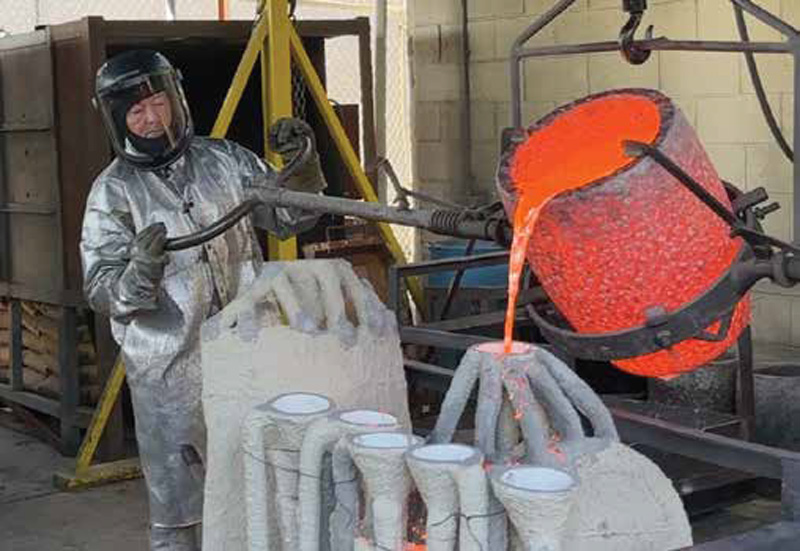
The molten beginnings of the monument.
CDN: The Monument itself is very highly detailed. Who did the sculpture for you?
Leaney: Yes, the detail is amazing. Monument Projects’ sculptor is Greg Polutanovich, who is based in Simi Valley, California. Greg is probably best known for his bronze bust of President Ronald Reagan, which was presented to First Lady Nancy Reagan at the Ronald Reagan Presidential Library. We felt that if Greg was good enough for the President of the United States, he should be good for us. Plus, we are happy there were so many California connections! Paul had originally hired Greg for the US Navy Mark V Monument. That was a very successful project, so it made sense for Greg to sculpt the Deepwater Diving Monument. The fact that Greg is also a Sea Hunt fan and has a bust of The Creature from the Black Lagoon in his studio sort of endorsed him for our project.
CDN: This was obviously not a cheap project to fund. How much was it and how did you do it?
Leaney: Very true. Our budget goal was around half a million dollars. Don and I both had fund raising experience from our work with nonprofits so fund raising was not alien to us. The Mark V Monument had been fully funded by the sale of 300 fine art limited edition statuettes of that monument, so we initially decided to follow that successful approach. There are 300 individually numbered fine art bronze statuettes of the Deepwater Diving Monument which we have been steadily selling. The downside to the Mark V monument approach was that it took the navy team about seven years to sell all 300 statuettes and during those seven years raw material costs forced five price increases. We are not young guys, so we didn’t want to wait that long, or run the constant risk of possible price increases. We wanted to build it as soon as possible so we would be around to enjoy it. So, we added a second funding track of direct donations, bringing in SBMM as our fiscal agent. It was agreed that donations of $5,000 or higher would be recognized on a bronze plaque that accompanied the Monument. The committee then marketed the project directly to friends, associates and the general diving industry. We had a booth at both DEMA and Underwater Intervention in 2022 and 2023, and the Scuba Show. Once construction started, updates were posted on the deepwaterdivingmonument.com website and published in quarterly reports in the Journal of Diving History. With the combination of the statuette sales and direct donations we were completely funded in less than three years.
And so that it is not lost on our fellow divers, I will repeat it slowly. Our team raised $500,000 cash for a 10-foot bronze California diving monument in less than three years!
CDN: Those statuettes sound like they are pretty exclusive. Have they all sold?
Leaney: Well, limited to only 300 pieces they are exclusive, and like the actual Monument, they are unique and very highly detailed. One of the factors in deciding to produce the statuettes was that once all the Mark V Monument statuettes sold, their value started to steadily increase. The last Mark V statuette I saw sell had about doubled in price, but they seldom turn up now. A few Deepwater Diving Monument statuettes are still available on deepwaterdivingmonument.com
CDN: There have been numerous styles of commercial diving gear over the years. How did you select this style of diver?
Leaney: Don and I have both researched and written about diving history but the foremost diving historian in our area is my fellow Brit Chris Swann. Don and I invited Chris to a meeting to discuss what sort of equipment the monument diver should be wearing. We both had a good idea but wanted an acknowledged historical expert’s opinion from Chris. After considering gear from abalone diving through to modern day, we three agreed that the Kirby Morgan Superlite 17b helmet best represented the deepwater diving community. It was introduced in 1975 and designed so well that it is still in service today, exactly half a century later. We arranged a meeting with Kirby Morgan President Connie Morgan, and she endorsed the choice. Don and his colleagues from SBCCMTD oversaw the dress and rigging of a circa 1982 diver preparing to go to work.
CDN: The team at CDN know there are several other California locations that have played an important role in the history of diving. Are there other places you could see a diving monument being erected?
Leaney: There is already one of Body Glove’s Bob and Bill Meistrell at Redondo Beach, so there has been civic interest in recognizing diving pioneers. A statue that would probably draw the most support would be of Lloyd Bridges in his role as Mike Nelson in the television series Sea Hunt. Maybe include a statue of his co-star Zale Parry with him, highlighting how the show inspired a generation of men and women, boys and girls, to take up the sport of scuba diving. Thanks to international distribution, Lloyd and Zale were seen in Sea Hunt on a pretty much global scale. I watched it in England. It is probably impossible to find a diver from my generation that did not see that show. Where it would be is up for discussion, but near the site of the Marineland of the Pacific at Portuguese Bend in Palos Verdes Peninsula would be an obvious contender as a lot of filming was done at that location.
The Deepwater Diving Monument Project is being funded by the sale of Limited Edition, Certified, Fine-Art Bronze Statuettes and by charitable donations made through the Santa Barbara Maritime Museum. For more information, including how to support the project or attend the unveiling, go to deepwaterdivingmonument.com.
